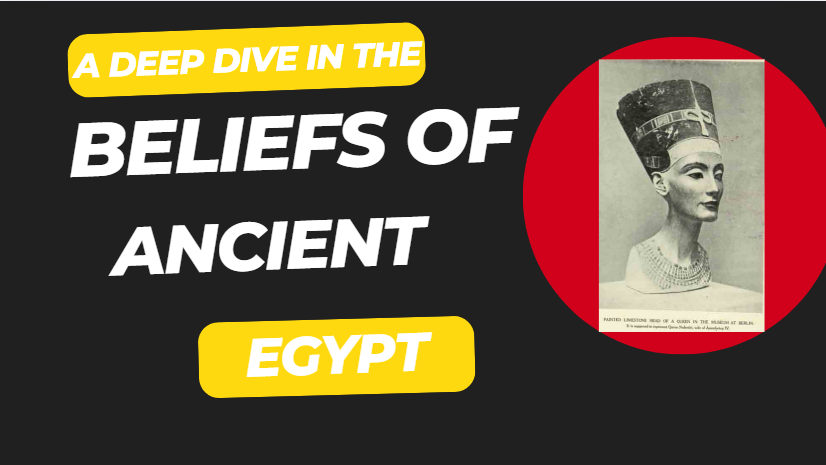
This 1923 book, Tutankhamen: Amenism, Atenism and Egyptian Monotheism, by Martin Hopkinson, examines the religious history of ancient Egypt, focusing on the reigns of Tutankhamen and Amenhotep IV. It presents hieroglyphic texts and illustrations, exploring the cults of Amen and Aten, including hymns and analyses of their development and decline. The text also discusses the political and social context surrounding these religious shifts, offering insight into the beliefs and practices of the time. The book includes a preface detailing the discovery of Tutankhamen’s tomb and its significance for understanding ancient Egyptian religion. Finally, it analyzes Egyptian monotheism and its relationship to earlier polytheistic traditions.
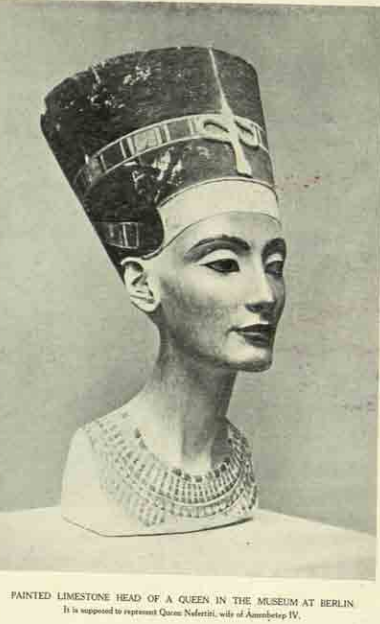
- What was the primary focus of religious life in Egypt during the time of the 18th Dynasty kings?
- During the reigns of most of the 18th Dynasty kings, religion was focused on a pantheon of gods, with the cult of Amen of Thebes gaining significant power and wealth. The temple of Amen-Ra grew to enormous size, with many priests and great revenues from tribute and temple properties. However, the religious landscape was not monolithic, as indicated by the variety of gods and cults across Egypt. For example, Heliopolis was the center of Ra worship, and other cities had their own local deities.
- How did Akhenaten’s religious reforms change Egyptian religious practices and beliefs?
Amenhotep IV, later known as Akhenaten, instituted radical religious changes, centered on the worship of the Aten (the sun disk) as the sole god. He rejected the traditional pantheon and moved the capital to Akhetaten (modern Amarna) to establish a new center for the Aten’s worship. He abolished the priests of Amen and confiscated their revenues. He presented Aten as a self-created, all-powerful, and benevolent god, represented as the solar disk with rays ending in hands. These religious reforms met with considerable resistance from traditional religious authorities.
- How did Tutankhamun’s reign represent a return to traditional Egyptian religion?
Tutankhamun, whose name was originally Tutankhaten, played a key role in restoring the old religious order following Akhenaten’s death. He changed his name to Tutankhamun, indicating his return to the worship of Amen. He shifted the royal residence back to Thebes and undertook large-scale projects to rebuild temples and revive the cults of the traditional gods, particularly Amen, Ptah, and Ra. His reign is seen as a rejection of Atenism and a restoration of Egypt’s traditional polytheistic religious practices.
- What was the religious and political climate in Egypt when Tutankhamun ascended to the throne?
When Tutankhamun became king, Egypt was in a state of disarray. The religious establishment was weakened, temples were in ruin, and the treasury of the gods was depleted. Akhenaten’s policies of centralization and rejection of old gods had led to the deterioration of national infrastructure and trade. Many of Egypt’s vassals and trading partners became restless, and the country was politically fragile.
- How did Tutankhamun attempt to reverse the negative effects of Akhenaten’s reign on Egypt?
- Tutankhamun attempted to restore the political and economic stability of Egypt by ending Akhenaten’s cult of the Aten and returning to the old gods. This meant a revitalization of religious life by making new cult images, reestablishing offerings, and restoring temples. Additionally, Tutankhamun refilled the temple treasuries and gave stipends to priests. He also built new ships to facilitate trade and collect tribute. These acts were seen as a way of appeasing the gods and bringing good fortune to Egypt.
- What was the nature of Amen’s worship, and how was the deity conceptualized?
- Amen’s name means “hidden one,” and his early origins are obscure. Amen was seen as a universal god, creator, and preserver of life. The texts describe Amen as self-created and self-existent. Some sources even describe him as creating the other gods. His cult became associated with the sun god Ra, creating the combined deity Amen-Ra. In temples, Amen was often represented by golden statues and ritual objects with precious stones.
- How did the Hymns to Amen and Aten compare, and what do they reveal about the two deities?
Hymns to Amen and Aten reveal different views of the gods. Hymns to Amen describe him as a multi-faceted, powerful creator with a variety of forms and attributes. Hymns to Aten focus on him as the solar disk, emphasizing his visible presence, his life-giving light, and his role as the sole creator. Aten’s hymns are more abstract and philosophical. However, even in the Aten hymns, many of the attributes and actions that were previously associated with the old gods are projected onto Aten.
- To what extent can Amenhotep IV (Akhenaten)’s religious reforms be interpreted as a kind of monotheism, and how do Egyptian sources compare to other traditions such as those of the Middle East?
While Akhenaten’s devotion to Aten has been described as a form of monotheism, it was unlike the later monotheisms of the Middle East. Aten’s worship was more of a henotheism (worship of one god without denying the existence of others) or an exclusive monolatry (worship of one god while recognizing the existence of others, but not worshipping them). Akhenaten’s “monotheism” wasn’t based on moral law, nor was it the expression of a single people’s religious identity as it was among the peoples of the Middle East. Instead, it was an abstract and esoteric set of philosophical beliefs that were imposed onto a society with very little practical benefit. The monotheism of the Egyptians was also not always presented as the only true god and the destruction of other gods. This was especially the case after Tutankhamun and other Pharaohs after him reestablished the old gods and made new temples in their honor.
- What prompted the excitement around Tutankhamun’s tomb discovery in 1922? The discovery of Tutankhamun’s tomb in 1922 was highly exciting due to the sheer number of unprecedented artifacts it contained and their remarkable beauty and condition. The tomb’s contents offered insights into ancient Egyptian culture and religious practices.
- Describe the role of Ammit in Egyptian funerary beliefs. Ammit was a composite creature known as the “Eater of the Dead,” depicted with a crocodile head, lion middle, and hippopotamus hindquarters. In the Judgment Scene, she would consume the souls deemed unworthy, thus preventing them from entering the afterlife.
- How did the reign of Tutankhamun affect the religious landscape of Egypt? Tutankhamun’s reign marked a significant religious shift, as he restored the worship of Amen and made the Atenites relinquish their power. This is a direct reversal of the reforms instituted by his predecessor, Akhenaten.
- What is the meaning of the name “Amen” and what is its significance in the religious context of ancient Egypt? The name Amen means “hidden (one),” indicating that his form and essence were not fully known or revealed, and because of that, it could be applied to many Gods. He was a significant deity, sometimes referred to as the Great Lord of Thebes, King of the Gods.
- What is the primary function of the priests of Amen? The priests of Amen were instrumental in maintaining his cult and power, acting as intermediaries between the god and the people. They oversaw rituals, managed temple affairs, and played a key role in disseminating religious doctrine.
- What were the effects of the Atenite revolution on the Egyptian temples? During the Atenite revolution, temple properties were seized, and the priesthood of Amen was driven out. The temples fell into disrepair. This shift in power caused a period of disarray and stagnation in the religious life of the country, since people believed gods must dwell in a temple to be consulted.
- Who was Hui and what was his significance in relation to Tutankhamun? Hui was an official from Nubia and was an administrator serving under Amenhotep IV. His significance is that when he brought gifts to Tutankhamun, his actions were considered a show of tribute from Nubia to Egypt, thus confirming that Tutankhamun ruled those lands.
- How was Aten depicted differently than other Egyptian gods? Aten was depicted as a sun disc, often with rays extending down, each ending in a small hand. This differed from the anthropomorphic depictions of other gods and focused on a more abstract and universal understanding of the divine.
- How were the funerary practices during the Atenist revolution affected? Funerary practices were affected during the Atenist revolution. Traditional funerary texts like the Book of Opening of the Mouth were rejected and there were no priests available to perform traditional rites. Instead, the focus shifted away from the Tuat, or Underworld.
- In what ways did Amenhotep IV’s approach to monotheism differ from earlier Egyptian practices? Amenhotep IV’s monotheism, which focused on the worship of Aten as the sole god, was a radical departure from the traditional pantheon. It emphasized a single god as opposed to the belief that every god possessed an aspect of divine unity.
Essay Questions
- Analyze the social and political factors that contributed to the rise and fall of the Atenist religion in ancient Egypt, and how those forces affected the reign of Tutankhamun.
- Compare and contrast the characteristics and attributes of Amen, Aten, and Ra.
- Explore the impact of foreign influences, particularly from Mitanni, on Egyptian religious beliefs, specifically related to the cult of Amen.
- Discuss the evidence for monotheistic thinking in pre-Atenist Egypt and how this might have influenced Amenhotep IV’s religious reforms.
- Evaluate the role and significance of the hymns to Amen and Aten in understanding the religious beliefs of ancient Egyptians.
Glossary
- Amen/Amun: An ancient Egyptian god whose name means “hidden one.” He became a major deity, associated with the sun, creation, and kingship.
- Aten: The sun disk. Aten was the focus of religious worship under Amenhotep IV, who promoted it as the sole god.
- Atenism: The religious system established by Amenhotep IV (later Akhenaten) that centered on the worship of Aten as the sole deity.
- Cartouche: An oval or oblong figure containing hieroglyphs, typically enclosing the name of a royal person or deity.
- Hymn: A song or poem of praise or adoration, often addressed to a god or gods. These are a rich source for studying Egyptian theology.
- Khepri: A scarab beetle-headed god associated with the rising sun. Khepri is often depicted pushing the sun across the sky.
- Ma’at: The ancient Egyptian concept of truth, justice, and cosmic order. Ma’at is a goddess, also depicted as a feather.
- Mitanni: An ancient kingdom in northern Mesopotamia (present-day Syria and Turkey) that had cultural and political interactions with Egypt during the New Kingdom.
- Nesu Bát Name: The name given to the King of Egypt as the “Royal Heir” of Ra and as part of the “royal titulary” (the list of a king’s names and titles)
- Ra: The ancient Egyptian sun god, often considered the chief deity of Heliopolis. He is also associated with creation and kingship.
- Sekhet Boat: A mythical boat that Ra travels in across the sky in the day.
- Tem/Atum: A creator god associated with the setting sun. He is considered to be the earliest Sun god, and eventually would be absorbed by Ra.
- Thebes: An ancient city in Upper Egypt, often associated with the worship of Amen.
- Tuat: The ancient Egyptian underworld, the place where the dead traveled in their afterlife.
- Titulary: A list of a king’s names and titles.
- Uraeus: A representation of a cobra, worn as a symbol of royalty. It is associated with the protection of gods, kings, and queens.








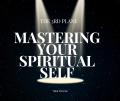

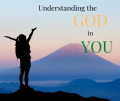
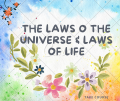










0 responses on "Amen and Aten: A Deep Dive into the Religious Beliefs of Ancient Egypt"